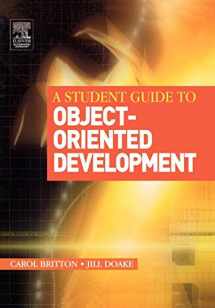
A Student Guide to Object-Oriented Development
Book details
Summary
Description
A Student Guide to Object-Oriented Development is an introductory text that follows the software development process, from requirements capture to implementation, using an object-oriented approach. The book uses object-oriented techniques to present a practical viewpoint on developing software, providing the reader with a basic understanding of object-oriented concepts by developing the subject in an uncomplicated and easy-to-follow manner. It is based on a main worked case study for teaching purposes, plus others with password-protected answers on the web for use in coursework or exams. Readers can benefit from the authors' years of teaching experience.
The book outlines standard object-oriented modelling techniques and illustrates them with a variety of examples and exercises, using UML as the modelling language and Java as the language of implementation. It adopts a simple, step by step approach to object-oriented development, and includes case studies, examples, and exercises with solutions to consolidate learning. There are 13 chapters covering a variety of topics such as sequence and collaboration diagrams; state diagrams; activity diagrams; and implementation diagrams.
This book is an ideal reference for students taking undergraduate introductory/intermediate computing and information systems courses, as well as business studies courses and conversion masters' programmes.


We would LOVE it if you could help us and other readers by reviewing the book
Book review



